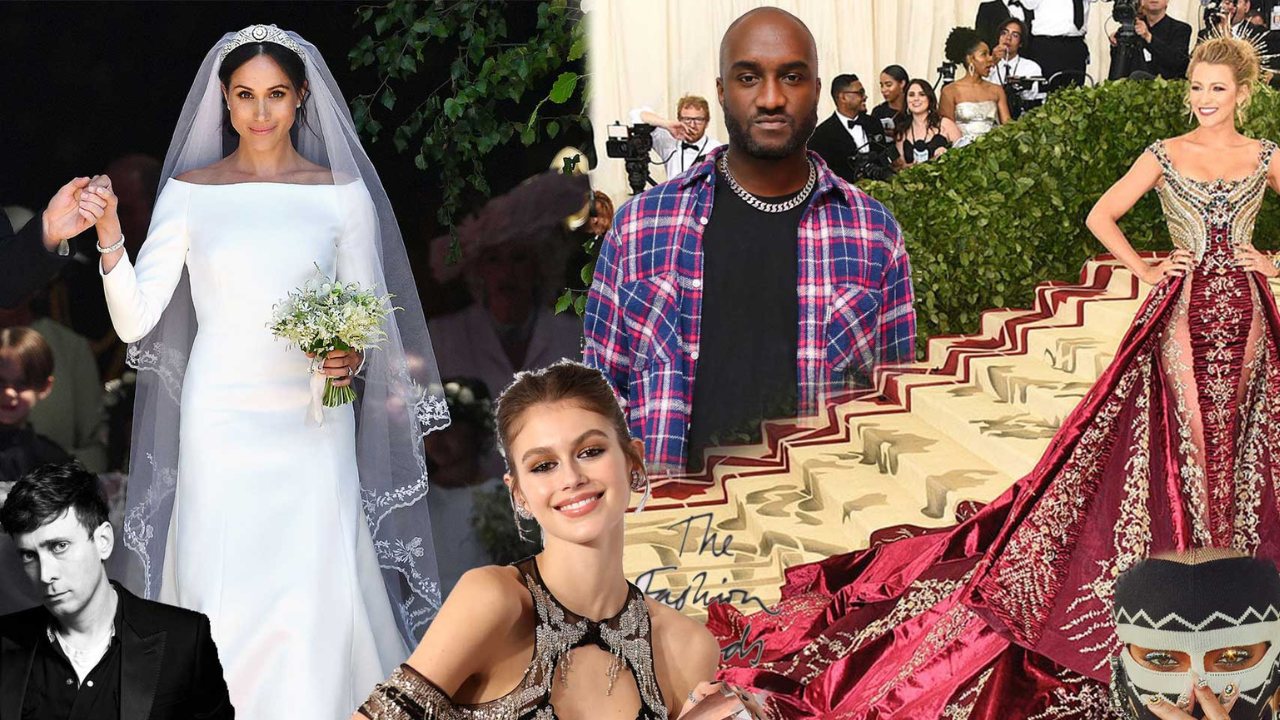
Fashion Flashback: Exploring Twentieth-Century Trends That Shaped Style
The twentieth century stands as a testament to the ever-changing landscape of fashion, where each decade unfolded like a vibrant chapter in a captivating story of style. From the glitz and glamour of the roaring twenties to the rebellious spirit of the swinging sixties and beyond, fashion evolved in tandem with societal shifts, leaving an indelible mark on the fabric of history. Let's embark on a mesmerizing journey through time, exploring the iconic trends that defined each era and continue to inspire the wardrobes of modern fashionistas.
- The Roaring Twenties: Liberation and Flapper Frenzy
As the world emerged from the ashes of World War I, the twenties heralded an era of newfound freedom and exuberance. Women cast aside the constraints of corsets and embraced the liberating silhouette of the flapper dress, with its dropped waistlines, shimmering fringe, and daring hemlines. Jazz Age icons like Coco Chanel revolutionized fashion with their bold and androgynous designs, paving the way for a new era of modernity and sophistication.
- The Fabulous Forties: Utility and Elegance Amidst Adversity
Amidst the chaos of World War II, fashion became a symbol of resilience and ingenuity. Rationing measures gave rise to utilitarian designs, with women embracing practical yet elegant ensembles that exuded understated glamour. From tailored suits and A-line skirts to platform shoes and victory rolls, fashion reflected a spirit of fortitude and grace in the face of adversity, proving that style knows no bounds, even in the darkest of times.
- The Swinging Sixties: Youth Culture and Psychedelic Revolution
The sixties burst onto the scene with a riot of color and creativity, fueled by the exuberance of youth culture and the spirit of rebellion. Mini skirts, go-go boots, and psychedelic prints became the uniform of the swinging sixties, as a new generation challenged the status quo and embraced a mantra of peace, love, and freedom. Icons like Twiggy and Mary Quant epitomized the era's bold and boundary-pushing aesthetic, inspiring a generation to march to the beat of their own drum.
- The Sensational Seventies: Disco Fever and Bohemian Chic
The seventies brought disco fever to the dance floor and a bohemian breeze to the fashion world. From glittering sequins and platform shoes to flowing maxi dresses and fringe vests, fashion reflected a newfound sense of freedom and expression. Icons like Bianca Jagger and Farrah Fawcett captivated the world with their effortless style and laid-back glamour, proving that seventies fashion was as diverse and eclectic as the era itself.
- The Electric Eighties: Power Suits and Punk Rebellion
The eighties exploded onto the scene with a riot of color, excess, and unapologetic glamour. Power suits, neon colors, and statement accessories became the uniform of the era, as women embraced a bold and fearless approach to fashion. From Madonna's punk-inspired looks to Princess Diana's regal elegance, the eighties was a decade of contradictions and contrasts, where style knew no limits and individuality reigned supreme.
- The Nineties Revival: Grunge and Minimalism
As the millennium approached, fashion took a turn towards the gritty and the minimalist. Grunge-inspired looks dominated the runway, with flannel shirts, ripped jeans, and combat boots becoming the uniform of Generation X. Meanwhile, minimalist designers like Calvin Klein and Helmut Lang embraced clean lines and understated elegance, proving that less was indeed more in the modern age.
The Roaring Twenties: Flappers and Jazz Age Glamour
In the glittering expanse of the Roaring Twenties, an era synonymous with liberation and opulence, emerged a cultural phenomenon that would forever change the landscape of fashion: the flapper. These spirited young women, with their bobbed hair, shimmering dresses, and irreverent attitude, became the embodiment of Jazz Age glamour, captivating audiences with their daring style and vivacious charm.
- The Birth of the Flapper: Breaking the Mold
At the heart of the flapper movement was a rejection of traditional norms and a celebration of newfound freedoms. Women embraced a more relaxed and androgynous silhouette, discarding the restrictive corsets and voluminous skirts of previous generations in favor of sleeker, more streamlined designs. With their cropped hair, dropped waistlines, and boyish figures, flappers defied conventions and challenged societal expectations with every step they took.
- The Flapper Aesthetic: Decoding the Look
Central to the flapper aesthetic was a sense of rebellion and nonconformity, reflected in their choice of clothing and accessories. Flapper dresses, adorned with intricate beadwork, fringe details, and Art Deco motifs, epitomized the era's decadence and extravagance. These garments were designed to accentuate movement, allowing flappers to dance the night away with unparalleled freedom and grace.
- The Rise of Coco Chanel: A Pioneer of Modernity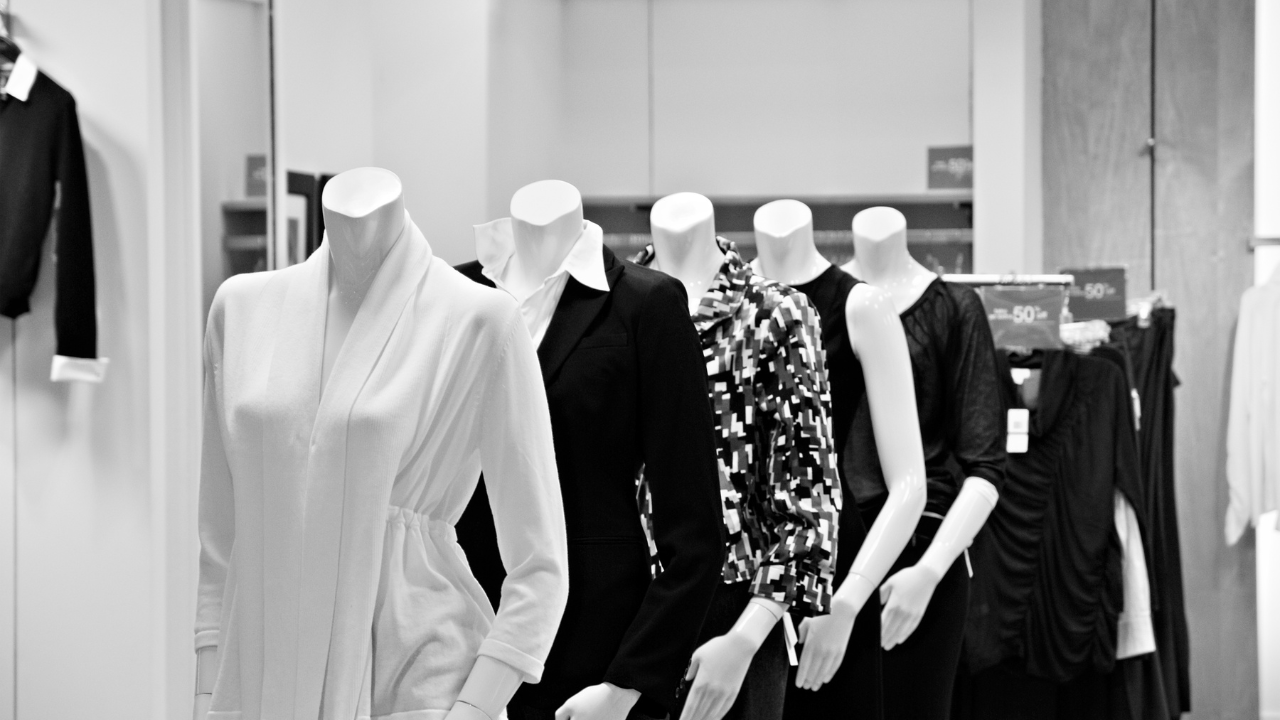
No discussion of 1920s fashion would be complete without mentioning the pioneering influence of Coco Chanel. The French fashion designer revolutionized women's wardrobes with her chic and effortless designs, introducing elements of menswear-inspired tailoring and functional elegance to women's fashion. Chanel's iconic little black dress, with its simple yet sophisticated silhouette, became a staple of every flapper's wardrobe, symbolizing understated glamour and timeless style.
- Flapper Culture: A Lifestyle of Freedom and Excess
Beyond their sartorial choices, flappers embodied a lifestyle characterized by hedonism, liberation, and unapologetic self-expression. These young women embraced the nightlife with gusto, frequenting jazz clubs, speakeasies, and dance halls with an insatiable appetite for adventure. They smoked cigarettes, drank cocktails, and danced the Charleston with infectious energy, challenging societal norms and redefining notions of femininity in the process.
- The Legacy of the Flapper: Echoes in Modern Fashion
Though the Roaring Twenties may have come to an end, the legacy of the flapper continues to reverberate through the corridors of fashion history. Their boldness, irreverence, and unapologetic spirit have inspired countless designers and artists, shaping the evolution of style for generations to come. From the runway to the silver screen, the allure of the flapper lives on, reminding us of the transformative power of fashion to challenge conventions, defy expectations, and celebrate individuality.
The Fabulous Forties: Embracing Utility Chic and Glamour in the Face of Adversity
In the wake of World War II, the 1940s brought forth a unique blend of utility chic and timeless glamour, as people navigated through the challenges of wartime rationing with creativity and resilience.
- Utility Chic: Fashioning Beauty from Scarcity
As resources became scarce during the war, fashion designers and everyday individuals alike embraced utility chic, a style born out of necessity. Practicality took center stage, with clothing designed to be functional yet stylish. Women's fashion saw the emergence of tailored suits with padded shoulders and A-line skirts, reflecting a sense of empowerment amidst adversity. Fabrics were carefully chosen for their durability, with wool and cotton being favored over luxurious materials.
- Glamour Amidst Adversity: Finding Joy in Fashion
Despite the somber backdrop of war, glamour remained an essential part of everyday life in the 1940s. Hollywood starlets provided a much-needed escape from reality, with their glamorous ensembles inspiring women around the world. Icons like Rita Hayworth and Katharine Hepburn epitomized wartime elegance with their sophisticated attire, showcasing the enduring allure of classic Hollywood glamour.
- Rationing and Ingenuity: Making Do with Less
With rationing measures in place, individuals had to get creative with their fashion choices. Women learned to make do with less, repurposing old garments and finding innovative ways to accessorize their outfits. Scarves became a versatile accessory, doubling as headscarves and belts, while practical shoes like oxford flats and wedge sandals offered both style and comfort.
- The Rise of Makeup: Red Lips and Victory Rolls
In the midst of wartime austerity, makeup emerged as a symbol of resilience and defiance. Red lipstick became a statement of strength and femininity, with women using it to boost morale and express their individuality. Victory rolls, a hairstyle characterized by its voluminous curls, became synonymous with the wartime era, reflecting a sense of optimism and hope for the future.
The Nifty Fifties: Post-War Prosperity and Retro Glamour
The 1950s, often referred to as the "Nifty Fifties," was a decade marked by a unique blend of post-war prosperity and retro glamour, characterized by iconic fashion trends that continue to influence modern style.
- Economic Boom and Optimism
Coming out of the devastation of World War II, the 1950s saw a remarkable period of economic growth and prosperity, particularly in Western countries like the United States. With the war behind them, people were eager to embrace a sense of normalcy and stability, leading to a surge in consumer spending and an unprecedented demand for goods.
- The New Look: Christian Dior's Influence
One of the defining fashion trends of the 1950s was the introduction of Christian Dior's revolutionary "New Look." Dior's designs, featuring cinched waists, full skirts, and feminine silhouettes, represented a departure from the austerity of wartime fashion. His iconic Bar Suit, unveiled in 1947, became synonymous with post-war elegance and glamour, setting the stage for the feminine styles that dominated the decade.
- Hourglass Figures and Feminine Silhouettes
The 1950s embraced the concept of the hourglass figure, with women accentuating their curves through structured garments and figure-flattering styles. Full skirts with petticoats, fitted bodices, and nipped-in waists became the epitome of feminine glamour, evoking an air of sophistication and grace. This emphasis on the feminine silhouette was further reinforced by the popularity of garments like the pencil skirt and the wiggle dress, which hugged the body in all the right places.
- The Influence of Hollywood Icons
Hollywood played a significant role in shaping fashion trends during the 1950s, with iconic actresses like Audrey Hepburn, Marilyn Monroe, and Grace Kelly setting the standard for glamour and sophistication. Hepburn's timeless elegance in films like "Roman Holiday" and "Breakfast at Tiffany's" epitomized the chic simplicity of 1950s style, while Monroe's bombshell persona brought a touch of sensuality to the era's fashion. Meanwhile, Kelly's regal grace and impeccable style as a real-life princess captivated audiences around the world, inspiring countless women to emulate her polished look.
- Everyday Glamour: Dressing for Success
In addition to glamorous eveningwear and Hollywood-inspired ensembles, everyday fashion in the 1950s was characterized by a sense of polish and refinement. Women embraced tailored suits, shirtwaist dresses, and twin sets, accessorizing with pearls, gloves, and structured handbags to complete their sophisticated look. Men, meanwhile, favored tailored suits with wide lapels, pleated trousers, and fedora hats, exuding an air of confidence and authority in the workplace and beyond.
The Swinging Sixties: Youthquake and Fashion Revolution
In the annals of fashion history, few eras evoke the same sense of liberation and creativity as the swinging sixties. Dubbed the "Youthquake" by Vogue editor Diana Vreeland, this transformative decade saw a seismic shift in cultural attitudes, with young people challenging the status quo and reshaping the fashion landscape in their image.
- The Rise of Youth Culture:
The sixties marked a departure from the conservative norms of the previous decade, as young people across the globe embraced a newfound sense of freedom and self-expression. With the post-war baby boom fueling a demographic shift, youth culture emerged as a powerful force, driving trends and shaping societal norms. From the streets of London to the boulevards of Paris, a generation of rebels, artists, and activists set out to revolutionize the world – and their wardrobe.
- Iconic Styles and Silhouettes:
At the heart of the sixties fashion revolution were bold new styles and silhouettes that challenged conventional notions of beauty and femininity. The era's defining look was epitomized by the mini skirt, a daring hemline that captured the youthful exuberance and optimism of the time. Inspired by the mod subculture and designers like Mary Quant, the mini skirt became a symbol of liberation, signaling a break from the constraints of tradition and propriety.
- Patterns, Prints, and Psychedelia:
The sixties were a riot of color and pattern, with psychedelic prints and bold graphics dominating the fashion landscape. Inspired by the burgeoning psychedelic music scene and the art of luminaries like Peter Max and Andy Warhol, designers experimented with vibrant hues, swirling motifs, and kaleidoscopic patterns that reflected the era's spirit of experimentation and exploration. From paisley to polka dots, the sixties were a feast for the eyes, with fashion embracing a sense of whimsy and playfulness that was unmistakably modern.
- The Influence of Youth Subcultures:
The swinging sixties were also defined by the emergence of distinct youth subcultures, each with its own unique style and ethos. From the mod movement with its sharp tailoring and geometric prints to the hippie counterculture with its flowing fabrics and bohemian aesthetic, young people found myriad ways to express their individuality and identity through fashion. Whether dancing the night away at the iconic clubs of London's Carnaby Street or protesting for peace and equality on the streets of San Francisco, youth culture was at the forefront of social change – and fashion was its megaphone.
- The Legacy of the Swinging Sixties
As the sixties drew to a close, its influence on fashion and culture was indelible. The spirit of youthquake continued to reverberate through the decades, inspiring subsequent generations of designers, musicians, and creatives to push boundaries and challenge conventions. From the bohemian chic of the seventies to the punk rock rebellion of the eighties and beyond, the swinging sixties left an enduring legacy that continues to shape the zeitgeist of today.
The Groovy Seventies: Embracing Bohemian Rhapsody and Disco Fever
In the vibrant tapestry of fashion history, the seventies stand out as a kaleidoscope of contrasting styles and cultural movements. It was a decade defined by freedom of expression, where individuals embraced their unique identities through fashion like never before. Let's delve deeper into the groovy seventies, where bohemian rhapsody and disco fever reigned supreme, captivating the hearts and wardrobes of a generation.
- Bohemian Rhapsody: The Rise of Counterculture Chic
In the midst of social and political upheaval, the seventies witnessed the rise of the bohemian aesthetic, a celebration of individuality, creativity, and freedom. Inspired by the hippie movement of the sixties, bohemian fashion embraced a carefree, eclectic vibe characterized by flowing silhouettes, earthy tones, and eclectic patterns. Fringed vests, bell-bottom jeans, peasant blouses, and patchwork skirts became the uniform of the counterculture, symbolizing a rejection of mainstream norms and a quest for authenticity.
- Disco Fever: Glittering Nights and Shimmering Style
While the bohemian spirit captured the essence of daytime fashion, the nights belonged to disco fever—a dazzling spectacle of sequins, satin, and sensational dance moves. The disco craze swept the globe, transforming nightclubs into glittering havens of hedonism and glamour. Disco fashion was all about making a statement, with shimmering fabrics, bold colors, and daring cuts taking center stage. From halter-neck jumpsuits and wrap dresses to platform shoes and metallic accessories, disco style was synonymous with extravagance and excess, reflecting the hedonistic spirit of the era.
- The Fusion of Bohemian and Disco: A Stylish Synthesis
What made the seve nties truly magical was the seamless fusion of bohemian and disco influences, creating a style that was both free-spirited and glamorous. Boho-chic elements like crochet tops, maxi skirts, and floppy hats found their place on the dance floor alongside sequined dresses, platform boots, and statement jewelry. It was a time of sartorial experimentation, where individuals embraced the freedom to mix and match styles, creating looks that were uniquely their own. Whether grooving to the beat of disco or basking in the sun at a music festival, seventies fashion was a vibrant celebration of self-expression and individuality.
nties truly magical was the seamless fusion of bohemian and disco influences, creating a style that was both free-spirited and glamorous. Boho-chic elements like crochet tops, maxi skirts, and floppy hats found their place on the dance floor alongside sequined dresses, platform boots, and statement jewelry. It was a time of sartorial experimentation, where individuals embraced the freedom to mix and match styles, creating looks that were uniquely their own. Whether grooving to the beat of disco or basking in the sun at a music festival, seventies fashion was a vibrant celebration of self-expression and individuality.
The Groovy Seventies: Bohemian Rhapsody and Disco Fever
In the tapestry of fashion history, few decades shimmer with as much vibrancy and audacity as the electrifying eighties. It was a time when fashion wasn't just about clothes—it was a statement, a celebration of opulence, power, and unapologetic extravagance. Let's delve deeper into this mesmerizing era, where power dressing reigned supreme and excess was the order of the day.
- The Rise of Power Dressing:
The eighties was the age of the power suit, a sartorial symbol of authority and ambition. Women, inspired by their male counterparts in the corporate world, embraced padded shoulders, tailored blazers, and high-waisted trousers with gusto. The power suit wasn't just about looking good it was about exuding confidence, commanding respect, and breaking through the glass ceiling with style.
- Extravagance on Display:
If there's one word that encapsulates the essence of eighties fashion, it's excess. From bold colors to oversized silhouettes, everything was bigger, brighter, and bolder in the eighties. Shoulder pads reached epic proportions, hair was teased to towering heights, and jewelry was piled on with abandon. It was a time when more was more, and subtlety took a back seat to showmanship.
- The Influence of Pop Culture:
The glamour of the eighties wasn't confined to the boardroom—it permeated every aspect of popular culture. Icons like Madonna, Princess Diana, and Joan Collins set the standard for style, inspiring legions of fans to emulate their bold looks. Music videos became fashion showcases, with artists like Michael Jackson and Prince pushing boundaries with their avant-garde ensembles and signature accessories.
- The Technicolor Palette:
Forget about muted tones and understated elegance—the eighties were all about vibrant hues and eye-catching prints. Neon colors like electric blue, hot pink, and acid green dominated the fashion landscape, adding an electrifying jolt to everything from dresses to accessories. Graphic prints, geometric shapes, and abstract patterns further fueled the era's love affair with boldness and brashness.
- The Legacy of Eighties Fashion:
While the eighties may be remembered for its excesses, its influence on fashion endures to this day. Elements of power dressing, from structured blazers to statement jewelry, continue to permeate contemporary style. Likewise, the spirit of experimentation and self-expression that defined the era remains a guiding principle for designers and fashion enthusiasts alike.
The Nineties Revival: Embracing the Spirit of Grunge, Minimalism, and Street Style
The nineties was a time of cultural upheaval and sartorial rebellion, marked by a distinctive fusion of gritty authenticity and understated elegance. As the decade unfolded, fashion underwent a profound transformation, reflecting the shifting attitudes and sensibilities of a generation disillusioned with the excesses of the past.
- Grunge: A Subversive Subculture Takes Center Stage
At the heart of the nineties fashion revival was the emergence of grunge—a raw, unapologetic movement that rejected the glossy veneer of mainstream culture in favor of authenticity and individuality. Inspired by the underground music scene of Seattle and bands like Nirvana and Pearl Jam, grunge fashion embraced a DIY aesthetic characterized by flannel shirts, ripped jeans, and Doc Martens boots.
- Minimalism: Less is More in the Age of Simplicity
While grunge rebelled against the status quo, minimalism offered a counterpoint—a serene oasis of simplicity and restraint in a world overrun by excess. Championed by designers like Calvin Klein and Jil Sander, minimalist fashion favored clean lines, neutral colors, and unembellished silhouettes. The mantra "less is more" became a guiding principle, as fashionistas embraced the beauty of understatement and the elegance of simplicity.
- Street Style: From the Sidewalk to the Catwalk
In the nineties, the streets became a runway, and everyday style took center stage. Inspired by the vibrant energy of urban life and the eclectic mix of cultures, street style celebrated individuality and self-expression. From oversized hoodies and baggy jeans to bold graphic tees and statement sneakers, street fashion was a visual feast of creativity and diversity, blurring the lines between high fashion and everyday wear.
- The Legacy of the Nineties: A Timeless Tapestry of Trends
As we look back on the nineties revival, it's clear that the era's fashion legacy endures, influencing contemporary style and inspiring new generations of designers and fashion enthusiasts. Whether it's the rebellious spirit of grunge, the serene elegance of minimalism, or the vibrant creativity of street style, the nineties continue to shape the way we dress and express ourselves in the modern world.
In a world saturated with trends and fleeting fads, the nineties revival serves as a reminder of the enduring power of fashion to reflect our values, challenge the status quo, and celebrate the beauty of individuality. So whether you're channeling your inner Kurt Cobain with a vintage flannel shirt or embracing the clean lines of minimalist chic, remember that style is not just about what you wear—it's about who you are and the story you choose to tell.
Summary:
"Diving into the Fashion Flashback: Exploring Twentieth-Century Trends That Shaped Style," takes readers on a captivating journey through the evolution of fashion from the roaring twenties to the nineties revival. Each decade is vividly depicted, highlighting iconic trends and cultural influences that continue to resonate in modern fashion. From the liberation of the flapper era to the opulence of the eighties, readers are immersed in a rich tapestry of style that reflects the ever-changing landscape of society. The article celebrates the enduring legacy of each era while offering insights into how historical fashion trends continue to inspire and influence contemporary style.
Disclaimer:
DXB News Network acknowledges that fashion is a deeply personal and subjective topic, and individual preferences may vary. The information presented in this article is intended to provide readers with a broad overview of twentieth-century fashion trends and is not exhaustive. Readers are encouraged to explore further and draw their own conclusions based on personal taste, style preferences, and cultural influences. Additionally, DXB News Network does not endorse or promote any specific fashion brands or designers mentioned in the article. Readers are encouraged to conduct their own research and exercise discretion when making fashion-related decisions.
#trending #latest #FashionFlashback #TwentiethCenturyStyle #VintageVibes #FashionHistory #TimelessTrends #StyleEvolution #FashionIcons #DecadesOfFashion #NinetiesRevival #GlamourAndGrit #breakingnews #worldnews #headlines #topstories #globalUpdate #dxbnewsnetwork #dxbnews #dxbdnn #dxbnewsnetworkdnn #bestnewschanneldubai #bestnewschannelUAE #bestnewschannelabudhabi #bestnewschannelajman #bestnewschannelofdubai #popularnewschanneldubai
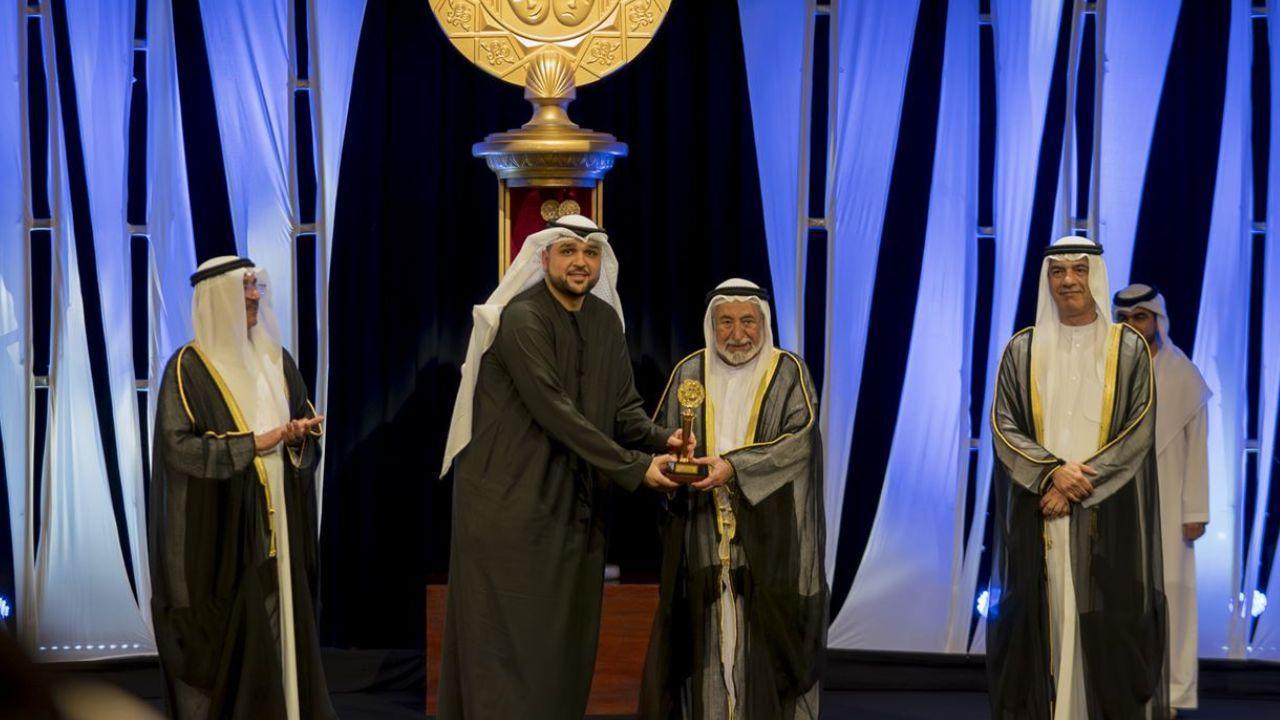
His Highness Sheikh Dr Sultan bin Mohammed Al Qasimi attended the 34th Sharjah Theatre Days closing...Read More.
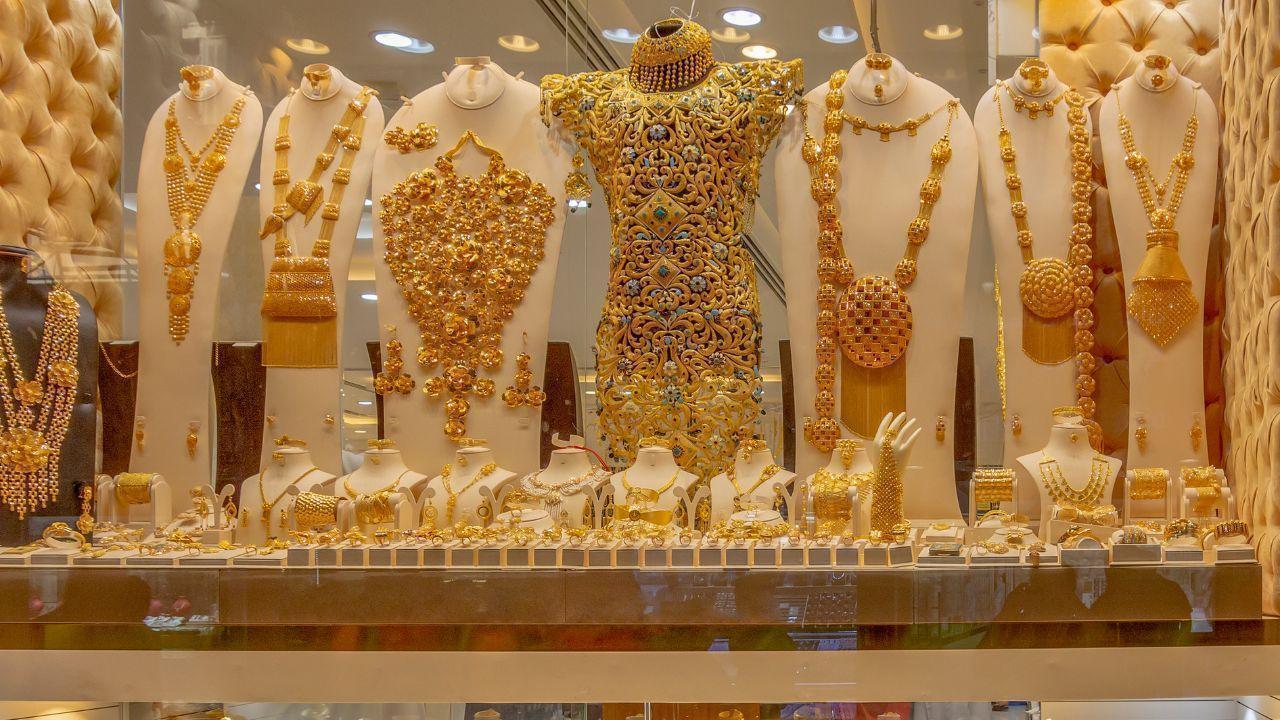
The Role of Jewelry in Empowering Women...Read More.
 Cleveland Clinic Abu Dhabi sees 35% rise in international patients in 2024
Cleveland Clinic Abu Dhabi sees 35% rise in international patients in 2024
The hospital saw more demand for heart, eye, nerve, and kidney care, with patients from Kuwait, Saud
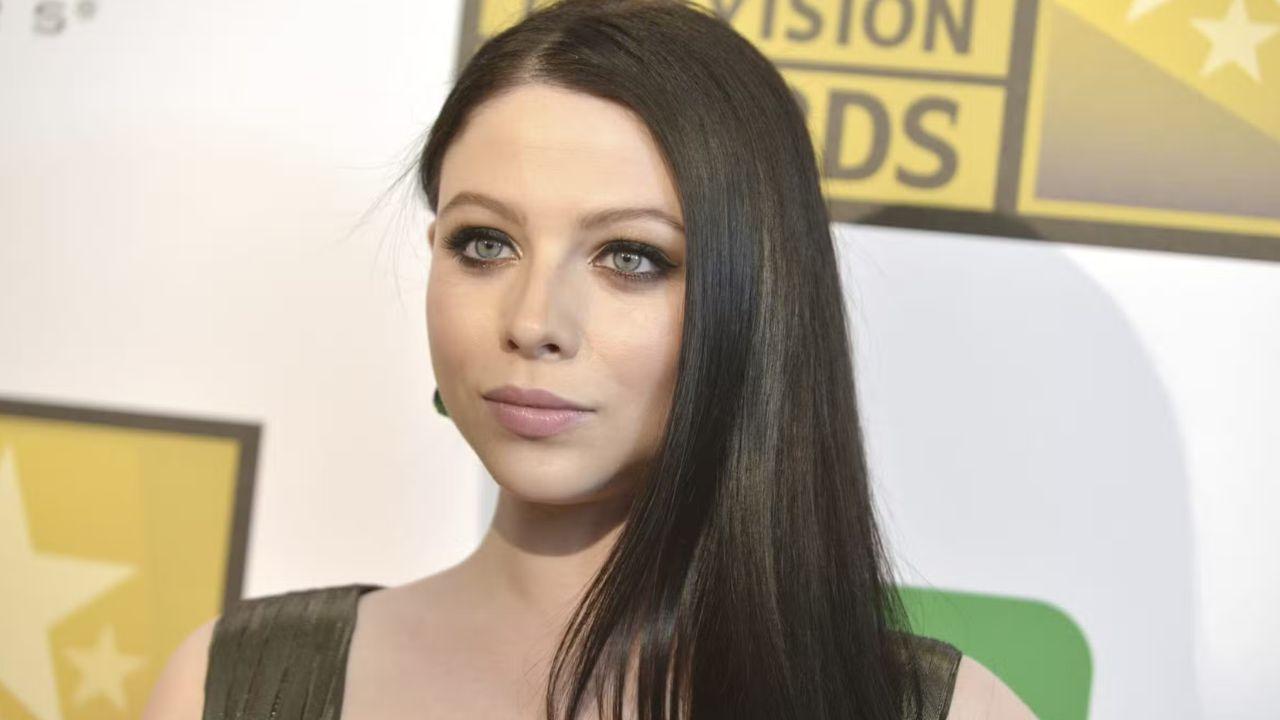 Michelle Trachtenberg, Buffy the Vampire Slayer Star, Passes Away
Michelle Trachtenberg, Buffy the Vampire Slayer Star, Passes Away
Michelle Trachtenberg, known for Buffy the Vampire Slayer and Gossip Girl, has passed away at 39
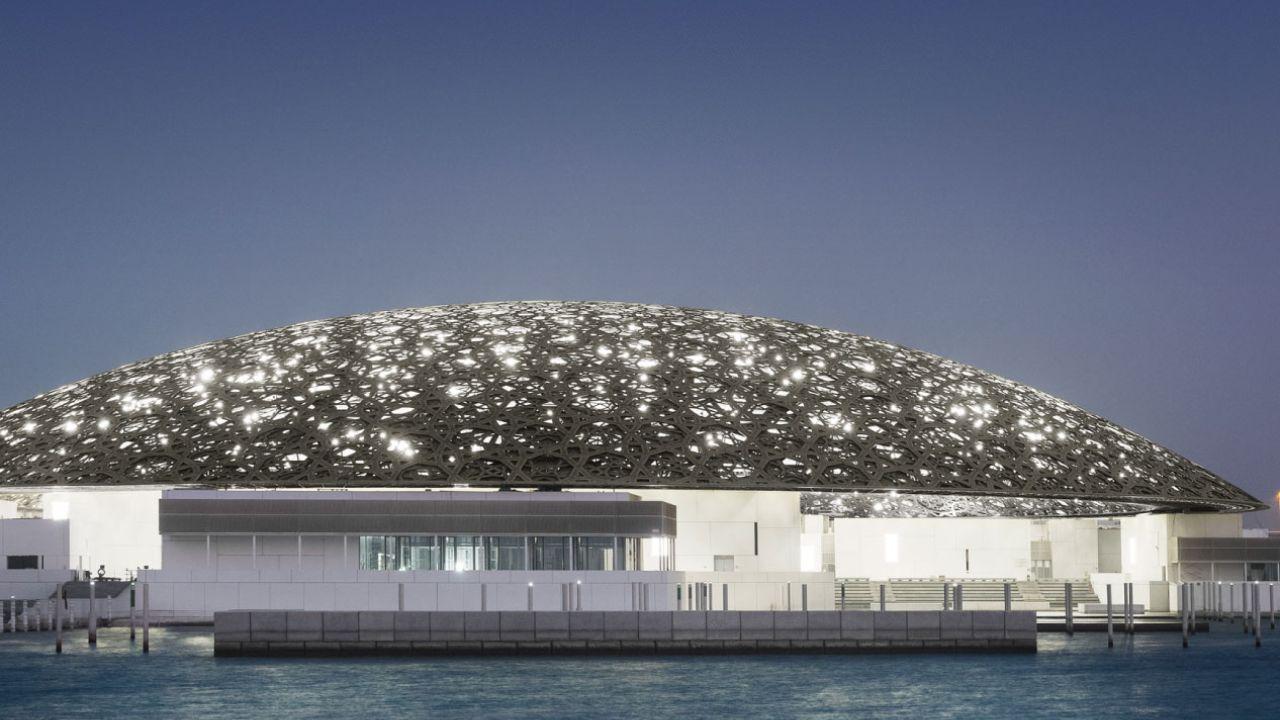 Louvre Abu Dhabi launches 5th Art Here & Richard Mille Art Prize
Louvre Abu Dhabi launches 5th Art Here & Richard Mille Art Prize
Louvre Abu Dhabi's Art Here 2025 explores light, shadow, and shared Gulf-Japan traditions
 Chelsea Crush Southampton, Aston Villa Lose to Crystal Palace in CL Race
Chelsea Crush Southampton, Aston Villa Lose to Crystal Palace in CL Race
Chelsea secured a 3-0 lead in the first half with goals from Nkunku, Neto, and Colwill, marking thei
 Sharjah Crown Prince presides over Executive Council meeting
Sharjah Crown Prince presides over Executive Council meeting
HH Sheikh Sultan bin Mohammed chaired Sharjah's Executive Council meeting Tuesday
Sultan Al Qasimi attends 34th Sharjah Theatre Days closing ceremony

His Highness Sheikh Dr Sultan bin Mohammed Al Qasimi attended the 34th Sharjah Theatre Days closing
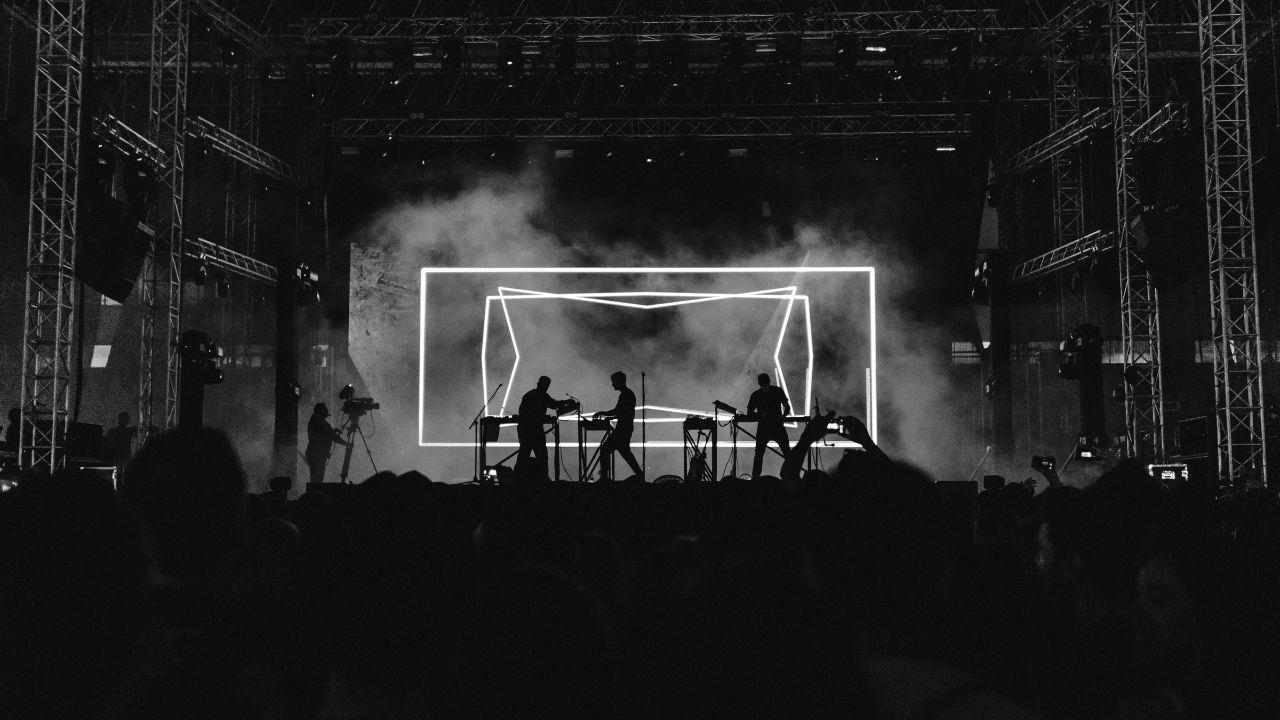
Discover the hottest artists redefining music in 2025
Cleveland Clinic Abu Dhabi sees 35% rise in international patients in 2024

The hospital saw more demand for heart, eye, nerve, and kidney care, with patients from Kuwait, Saudi Arabia, Pakistan, Bahrain, and the USA traveling to Abu Dh
Sultan bin Ahmed Al Qasimi attends Xposure International closing

His Highness Sheikh Sultan bin Ahmed Al Qasimi attended the closing of Xposure’s 9th edition, a global event that welcomed over 30,000 attendees, celebrating ph
Top Music Releases and Tours Happening Right Now
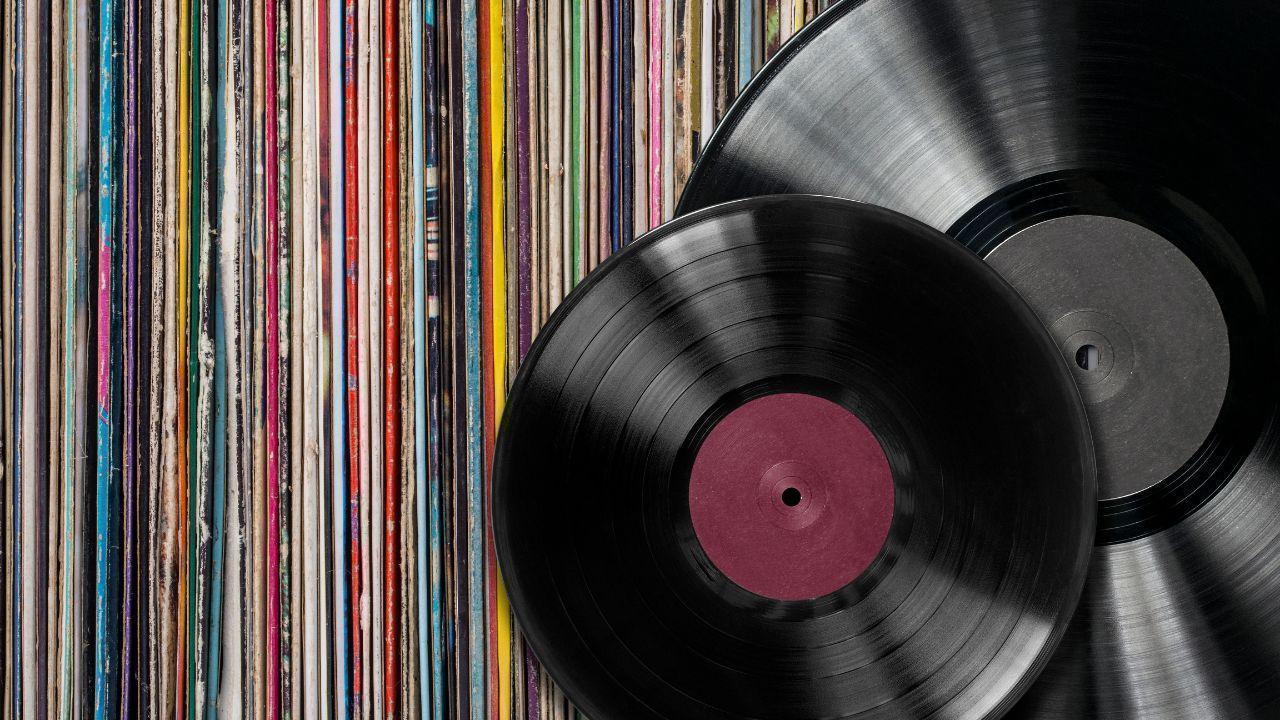
Discover the hottest music releases and must-see tours today
Wizz Air to launch nonstop flights from London to Madinah soon

Starting August 2, Wizz Air will run seven weekly flights using A321 XLR aircraft with 239 seats
Competitive Sports Trends That Athletes Should Know in 2025

Key sports trends in 2025 to help athletes improve performance
Dubai real estate prices fall for the first time in two years

Property Monitor's monthly report shows a 4.6% drop in sales volume compared to December 2024
Israel refuses Gaza pullout, putting ceasefire deal at risk

Hamas stated that Israel can only secure the release of remaining hostages through talks and truce
3001E, 30 Floor, Aspin Commercial Tower, Sheikh Zayed Road, Dubai, UAE
+971 52 602 2429
info@dxbnewsnetwork.com
© DNN. All Rights Reserved.